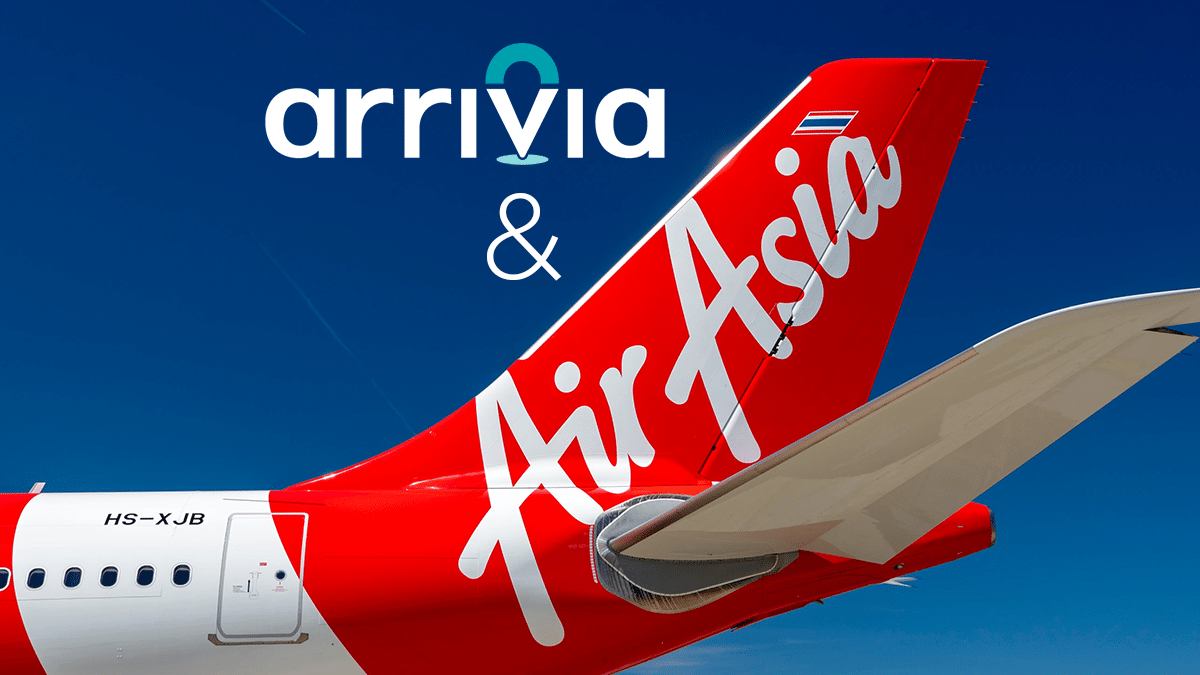The global cruise industry welcomed 34.6 million passengers in 2024, with 37.7 million expected in 2025. Repeat travelers aren’t just coming back; they’re cruising more often. One in four sets sail twice or more a year. Rewarding that kind of loyalty takes more than points. Luckily, a combination of blockchain and loyalty programs could help keep your brand at the helm of every voyage.
Even better, it’s not as futuristic as it sounds. Blockchain and loyalty programs can unlock onboard wallet functionality, flexible credits, and even transferable perks between cruise lines and travel partners. The result? A more engaging passenger experience that builds loyalty from booking to boarding and beyond. Explore how this technology could chart a new course for cruise rewards.
Why Cruise Loyalty Programs Need a Modern Makeover
Today’s cruise loyalty programs still revolve around traditional perks, like priority boarding and cabin upgrades, but most passengers aren’t as easily impressed anymore. Instead, 45% say they would prefer premium rewards, and 44% would book more often if they could just earn extra points. The problem? Cruise loyalty programs are often siloed, inflexible, and disconnected between trips.
Modern travelers demand more than static tiers and generic perks. They expect seamless, digital-first experiences that feel personal. That’s especially true for younger cruisers, who are the future of the industry: 36% of cruise travelers are now under 40, and 67% are Gen X or younger. Plus, as the luxury cruise market triples, so do the expectations for high-value loyalty programs.
Blockchain and loyalty programs offer a smarter way forward. Combined, they power the potential for flexible rewards, onboard wallets, and seamless integration with partner programs. Imagine credits that live in a passenger’s digital wallet and travel with them, from booking to boarding to their next adventure. Blockchain and loyalty programs aren’t just a trend; they’re a timely upgrade.

What Blockchain Really Means for Loyalty Providers
Don’t worry, you don’t need to be a developer to understand the perks of blockchain and loyalty programs. Blockchain is simply a secure, decentralized ledger that records and verifies transactions in real-time. For cruise providers, that means loyalty rewards are tracked transparently, updated instantly, and far less prone to error or fraud, no matter where your passenger is on their itinerary.
A decentralized ledger tracks every passenger login, interaction, and redemption touchpoint, creating a tamper-proof view of the loyalty journey. But the value goes beyond the back end. Nearly half of all travelers plan to take a longer cruise this year than last, making now the perfect time to elevate the experience. With blockchain and loyalty programs, cruise lines can offer rewards that are:
- Personalized across touchpoints
- Tokenized and easy to redeem
- Portable between ships, sailings, and partner brands
- Integrated into a passenger’s mobile wallet solution
By combining blockchain and loyalty programs, cruise credits no longer sit in a static account. Instead, they live inside an onboard wallet that updates in real-time. This functionality allows credits to move with the passenger, unlocking perks not just on one line, but across sister brands, excursions, and travel partners. That’s where the power of interoperability comes in.
Here’s what blockchain really does for cruise loyalty programs:
Evolving from Standard Points to Smart Tokens
Tokens are digital rewards that function like currency. Unlike traditional points, tokenized rewards act like smart assets. Within blockchain and loyalty programs, these tokens are dynamic: they hold values and rules. Passengers can redeem them onboard for dining, spa services, or excursions, or even apply them to partner travel perks. They’re more versatile (and more engaging) than points.
Tokenized cruise credits can also be tied to smart contracts, triggering exclusive offers based on individual booking behavior. Think promotions like, “Book your next cruise within 6 months and get 25% off.” With 80% of cruisers booking three or more months in advance, tokenized rewards give providers a chance to influence that timeline and drive faster, smarter conversions.
Enabling Stronger Trust and Transparency at Sea
As luxury cruise bookings surge, so do expectations around security, accuracy, and fairness, especially for high-value loyalty members. This is an area where blockchain excels. Its structure makes rewards fraud nearly impossible, as every passenger transaction is tracked, validated, and visible in real time. It can also help to combat cybersecurity risks, like the hacking of personal data.
Moreover, blockchain and loyalty programs help eliminate the guesswork that often plagues travelers. No more wondering if credits transferred, points expired, or perks were properly applied. It’s all visible, secure, and seamless — helping build long-term trust with your most loyal passengers.
Sailing into the Future: Cruise-Specific Use Cases
Now that you know how blockchain and loyalty programs work together, let’s put them into action. It starts with onboard mobile wallets tied to each passenger’s digital identity. These track spending, trigger auto-redeem offers, and gamify rewards throughout the journey, from pre-cruise booking milestones to post-cruise rebooking incentives. For instance, passengers can earn credits from filling out pre-departure surveys or rating onboard dining, then apply them to future upgrades, excursions, or even their next cruise.
From here, blockchain and loyalty programs support the kind of flexibility today’s travelers crave. Perks can move across co-branded cruise lines, travel partners, hotels, and airlines — perfect for the 69% of passengers who stay in a hotel and the 19% who prefer bundled packages with airfare and lodging. Airlines like Virgin Australia and Air India are already on board: they’ve partnered with arrivia to let members earn cruise rewards points. Blockchain works to keep those points easy to track, redeem, and transfer.
Overcome Common Challenges with Blockchain and Loyalty Programs
While cruising makes up just two percent of global tourism, it packs a punch. In fact, today’s cruise lines are generating over $168 billion in global economic impact. That’s a lot of value riding on the passenger experience, and a tough environment for experimenting with new tech, but blockchain and loyalty programs don’t have to be risky. You can overcome challenges without going overboard.
Here’s how blockchain and loyalty programs simplify the process:
- Streamline complex loyalty systems into one secure, digital dashboard
- Eliminate the need for point conversions across brands and currencies
- Reduce backend reconciliation headaches in multi-brand partnerships
- Enhance the passenger experience with a single wallet for all credits and perks
- Improve program transparency and trust with real-time reward tracking
- Automate reward rules and promotion redemption with smart contracts
The best part? You don’t need to build a blockchain solution from the ground up. Partners like arrivia offer plug-and-play loyalty platforms that integrate seamlessly with your existing systems. This way, you can offer white-label travel perks across airlines, hotels, resorts, and rental cars under your own branded program. Blockchain doesn’t need to be disruptive; it can be smooth sailing.
Make Every Voyage More Rewarding with Blockchain Perks
In a competitive travel market, loyalty isn’t just about perks; it’s about making every voyage feel more rewarding than the last. As cruise traveler expectations rise, flexible rewards and always-on digital wallets can set your brand apart. Blockchain and loyalty programs create a smarter, more meaningful way to build connections that last long after passengers have disembarked.
Interested in exploring the future of loyalty technology? Schedule a demo to see how arrivia approaches innovation in travel rewards.
Blockchain & Loyalty Programs FAQs
What is the connection between blockchain and cruise loyalty programs?
Blockchain technology brings security, flexibility, and transparency to cruise loyalty programs. By tokenizing rewards and storing them in secure onboard wallets, passengers can earn, track, and redeem credits seamlessly across cruises, sister brands, and travel partners.
Why do cruise loyalty programs need an upgrade?
Traditional programs often rely on static tiers and limited perks like priority boarding or cabin upgrades. Modern travelers—especially younger cruisers—expect personalized, digital-first experiences. Blockchain and loyalty programs together enable flexible rewards, mobile access, and seamless partner integration.
How does blockchain improve reward tracking and security?
Blockchain is a decentralized ledger that records transactions in real time, making reward fraud nearly impossible. It ensures credits are updated instantly, visible to passengers, and protected against cybersecurity threats, eliminating the confusion around lost points or expired perks.
What are tokenized rewards, and how do they work?
Tokenized rewards are digital assets that act like currency within a loyalty program. Unlike static points, tokens can carry rules and values — for example, offering a discount if a passenger books another cruise within six months. These rewards are more versatile and engaging for passengers.
How do onboard wallets enhance the passenger experience?
An onboard wallet stores a passenger’s tokenized rewards and updates in real time. Passengers can redeem credits for onboard dining, spa treatments, excursions, or even partner perks. This eliminates the need to manage multiple accounts or convert points between brands.
Can blockchain rewards work across multiple travel brands?
Yes. Blockchain enables interoperability, allowing credits to transfer between co-branded cruise lines, hotels, airlines, and other travel partners. This flexibility is ideal for passengers who bundle cruises with airfare, lodging, or excursions.
What are some real-world use cases for blockchain in cruise loyalty?
Examples include:
- Onboard gamification: earning credits for completing surveys or engaging in activities.
- Partner perks: applying cruise credits to hotel stays or flights.
- Dynamic offers: triggering discounts based on booking behavior.
- Secure tracking: viewing reward balances and redemptions in real time.
How does blockchain solve common loyalty program challenges?
It streamlines multiple loyalty systems into one digital wallet, eliminates point conversions, reduces backend reconciliation issues, automates promotions via smart contracts, and ensures total transparency for passengers and partners alike.
How can blockchain and loyalty programs drive repeat bookings?
By offering personalized, transferable rewards and a frictionless redemption process, cruise lines create a more engaging passenger experience. This increases satisfaction, strengthens brand loyalty, and encourages travelers to book their next voyage sooner.



